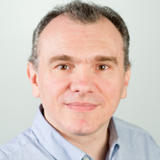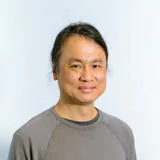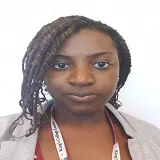From fortune-telling with ChatGPT to the cybersecurity of fairy tales, King's academics showcased their latest research and demonstrations in physics, technology, and AI at this year's New Scientist Live exhibition.
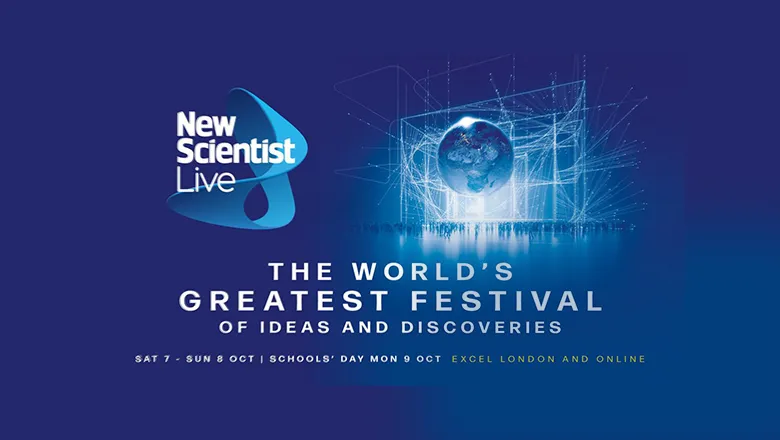
The demonstration
Hospital of the future
Run by The School of Biomedical Engineering & Imaging Sciences, Hospital of the Future was voted as the most popular feature at New Scientist Live 2022. With the help of over 100 King's staff and students, this award-winning exhibit showcased 13 demonstrations, allowing visitors to explore virtual reality journeys, live guided tours and interactive displays of healthcare engineering research. Visitors could become immersed in a virtual heart, control surgical robots, use novel ultrasound imaging techniques to see inside the human body and see how pacemakers are implanted onto the heart.
The talks
The brave little neuron
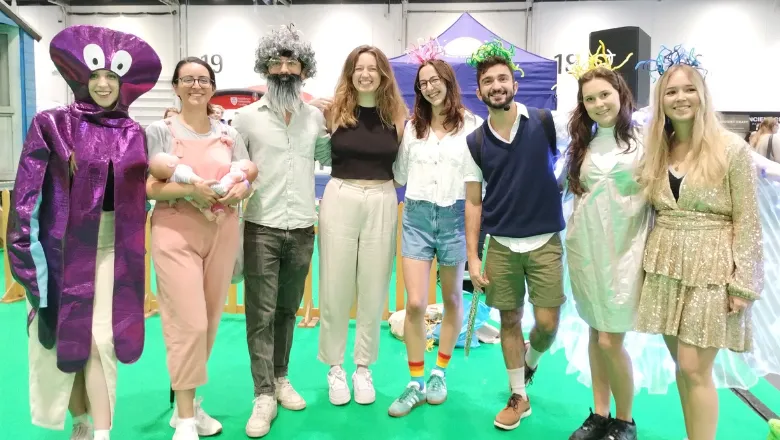
The audience was treated to 'the brave little neuron', a pantomime-esque production that follows a baby neuron as it grows up inside a brain. Formed by King's PhD students Phoebe Reynolds, Sara Ratti, Filipe Ferreira, Sally Horton and Jucha Willers Moore in 2022, the play has performed at "Green Man Festival'' and in schools across London. When the students aren't busy in the lab, they aim to make neuroscience accessible to everyone, and are involved in public science projects including "Pint of Science", "Sunnydown Synaptic" and science stand-up comedy shows with "Science Showoff".
Phoebe said: "We are so excited for this fantastic opportunity to share our research and engage the public in neuroscience in a fun way."
Creating 3D models of the body
Dr Elsa-Marie Otoo discussed the creation of an online 3D interactive viewer to present volumetric 3D medical data and models on 3D displays, to be used by students and medical professionals. Fitted with stereoscopic 3D displays (portable glasses-free TV or VR headsets), this allows users to see more in-depth information about the model than on a 2D screen and enables remote access learning.
Dr Otoo said: "3D visualisation helps us get a better and more accurate understanding of human anatomy, and having that knowledge of the structure and function of the human body under normal and pathological conditions is essential for all medical professionals. By having a system to improve depth perception of the remote participant through 3D displays, a more accurate and intuitive response can be provided to improve diagnosis, surgical planning, and intervention.
"With the push towards more personalised medicine, the use of medical imaging and minimally invasive therapy will continue to rise, so medical image interpretation and knowing the correct individual's surgical pathways are crucial. As the medical community becomes more global, online systems will assist in collaborative work and professional work such as working from home and in telemedicine."
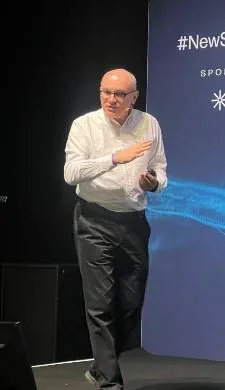
Cybersecurily ever after: the cybersecurity of fairy tales
What is the earliest fairy tale you remember? Was it Cinderella, Little Red Riding Hood or perhaps Ali Baba and the 40 Thieves?
Professor Luca Viganò revealed how fairy tales can illustrate the key concepts of cybersecurity. Cinderella and Little Red Riding Hood deal with authentication, Ali Baba and the 40 Thieves relates to passwords and confidentiality, and by relying on tales woven into the cultural consciousness we can raise awareness of key cybersecurity concepts in an increasingly digital world.
How do we prove we are who we say we are, verify someone's identity or, pretend to be someone else? Identity, authentication and privacy protection are all vital concepts in cybersecurity, but they can be complex. We should not be intimidated though. The basics are so integral to our lives that we can resort to fairy tales to understand them properly. Cinderella can explain multi-factor authentication, Ali Baba and the 40 Thieves anonymity, and so on.... Did you ever imagine that?
Professor Luca Viganò, Vice-Dean (Enterprise and Engagement) and Head of Cybersecurity Group
The future of machine intelligence: Fortune-telling with generative AI
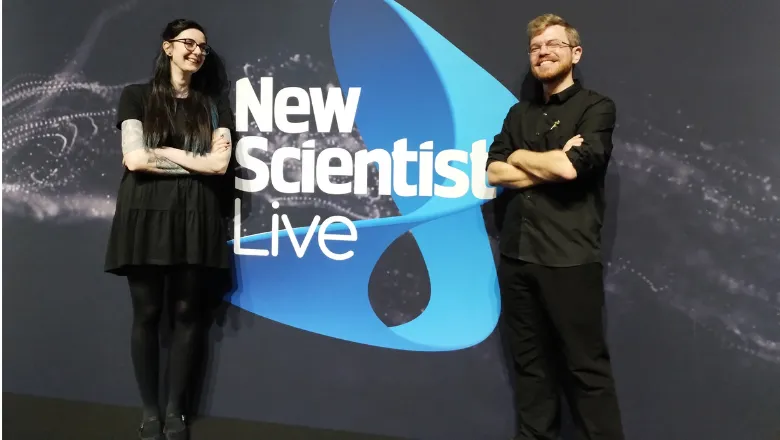

Dr Mike Cook and Amy Smith, a PhD student based at Queen Mary University of London, took audiences through the basics of generative AI - why they work, what they're good (and bad at) and what they might mean for the future.
Using ChatGPT and Midjourney (a generative text to image AI programme), the researchers created a new tarot card and asked ChatGPT to conduct a fortune-telling reading, asking about the future of AI and humanity.
Dr Cook said: "Generative AI is on a lot of people's minds right now, whether you've got kids in school using it for their homework or are worried it might affect your job. Like everything else coming out of the AI industry right now, there are reasons to be excited and reasons to be cautious.
"But the most important thing for all of us is that we learn more about it, so we can decide together how to navigate the future. I hope everyone who came along to the talk walked away with a better understanding of these strange new tools, and maybe a bit of cosmic guidance on what the future holds for them."
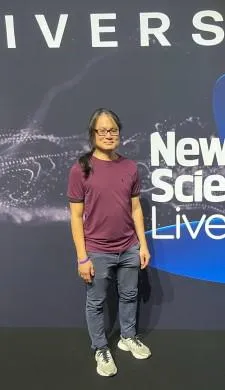
Quantum gravity: The hardest problem in physics?
In this talk, Professor Eugene Lim delved into black holes and why quantum gravity poses a problem for our understanding of theoretical physics.
Whilst there are the generally accepted fields of quantum mechanics and general relativity, these fundamentally contradict each other.
Explaining this opposition at the heart of physics, Professor Lim said:
If you apply the physics of general relativity with quantum mechanics, you get nonsense. Quantum mechanics makes precise predictions only when you ignore general relativity and vice versa. This is the central problem of quantum gravity. The ultimate goal of physicists is to get both theories on the same t-shirt.
Professor Eugene Lim, Professor of Theoretical Physics

